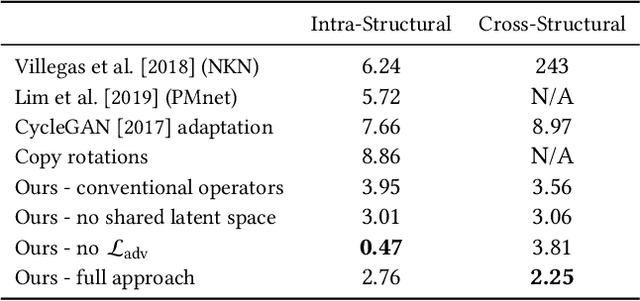Skeleton-Aware Networks for Deep Motion Retargeting
Paper and Code
May 12, 2020



We introduce a novel deep learning framework for data-driven motion retargeting between skeletons, which may have different structure, yet corresponding to homeomorphic graphs. Importantly, our approach learns how to retarget without requiring any explicit pairing between the motions in the training set. We leverage the fact that different homeomorphic skeletons may be reduced to a common primal skeleton by a sequence of edge merging operations, which we refer to as skeletal pooling. Thus, our main technical contribution is the introduction of novel differentiable convolution, pooling, and unpooling operators. These operators are skeleton-aware, meaning that they explicitly account for the skeleton's hierarchical structure and joint adjacency, and together they serve to transform the original motion into a collection of deep temporal features associated with the joints of the primal skeleton. In other words, our operators form the building blocks of a new deep motion processing framework that embeds the motion into a common latent space, shared by a collection of homeomorphic skeletons. Thus, retargeting can be achieved simply by encoding to, and decoding from this latent space. Our experiments show the effectiveness of our framework for motion retargeting, as well as motion processing in general, compared to existing approaches. Our approach is also quantitatively evaluated on a synthetic dataset that contains pairs of motions applied to different skeletons. To the best of our knowledge, our method is the first to perform retargeting between skeletons with differently sampled kinematic chains, without any paired examples.
 Add to Chrome
Add to Chrome Add to Firefox
Add to Firefox Add to Edge
Add to Edge